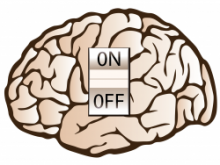PTSD
What is Post Traumatic Stress Disorder (PTSD)?
 Post Traumatic Stress Disorder (PTSD) is a serious type of anxiety caused by an extremely stressful event or series of events. Most people who suffer from PTSD are looking for an effective way to treat their symptoms, but unfortunately, many sufferers experience only limited benefit after trying various therapies and medication.
Post Traumatic Stress Disorder (PTSD) is a serious type of anxiety caused by an extremely stressful event or series of events. Most people who suffer from PTSD are looking for an effective way to treat their symptoms, but unfortunately, many sufferers experience only limited benefit after trying various therapies and medication.
Is Neurofeedback an Effective Way to Treat PTSD?
Neurofeedback can help a person with PTSD get his or her life back. Research studies show that PTSD is a disorder based in the brain. With PTSD, a severe stress response is triggered which leads to numerous disruptive symptoms. The challenge is to teach the brain to turn off the stress response.
 If more health professionals were aware of neurofeedback, it would be one of the primary treatments for PTSD. Training with neurofeedback is so effective for severe PTSD that in many cases, professionals and patients have reported that neurofeedback helped someone with PSTD “get their life back”. Psychiatrists, psychotherapists, and other mental health professionals around the world have achieved success for their patients with PTSD using neurofeedback training.
If more health professionals were aware of neurofeedback, it would be one of the primary treatments for PTSD. Training with neurofeedback is so effective for severe PTSD that in many cases, professionals and patients have reported that neurofeedback helped someone with PSTD “get their life back”. Psychiatrists, psychotherapists, and other mental health professionals around the world have achieved success for their patients with PTSD using neurofeedback training.
How Does Neurofeedback Help Alleviate PTSD?
Neurofeedback trains the brain to produce a calm state, as well as regulate the stress response. The specific areas of the brain affected by PTSD can also be targeted and trained to produce healthier patterns.
Frequently, the first sign of improvement is that a client sleeps better. Then other symptoms begin to improve, and it is often possible to significantly reduce medications. After sufficient training, a person with PTSD can maintain a calm state on his or her own. When they have reached this stable state, neurofeedback treatments can be decreased until no further training is necessary.
Why Treat PTSD with Neurofeedback?
- Highly effective
- Non-invasive
- Drug free
- Painless
- Without side effects
- Enduring with sufficient training
PTSD Success Stories with the Help of Neurofeedback
Mirjana Askovic, a therapist in Sydney, Australia, worked in a hospital treating traumatized war refugees. Askovic found that standard therapies offered little results with these patients. After hearing about neurofeedback, she asked the hospital for permission to learn how to do neurofeedback training and to use it with her patients. With their consent, she began to learn neurofeedback and treat her patients with brain training.
Askovic reports that neurofeedback brought dramatic improvements for her patients with severe PTSD. With her success, the hospital has broadened the use of neurofeedback training to include additional patients.
Askovic published a case history of one her patients, Pablo Diego, who developed PTSD after being tortured in Chile during the rule of Pinochet. For 20 years, he had been unable to overcome the psychological damage from the torture. With neurofeedback, he experienced remarkable improvement.
In the United States, the Homecoming for Veterans organization posted a powerful video chronicling the success of a veteran as a case study to highlight the potential for veterans with PTSD through neurofeedback training.
To learn more about how neurofeedback can help with PTSD, please visit our Neurofeedback Provider List to see if we have a clinician listed near you.


